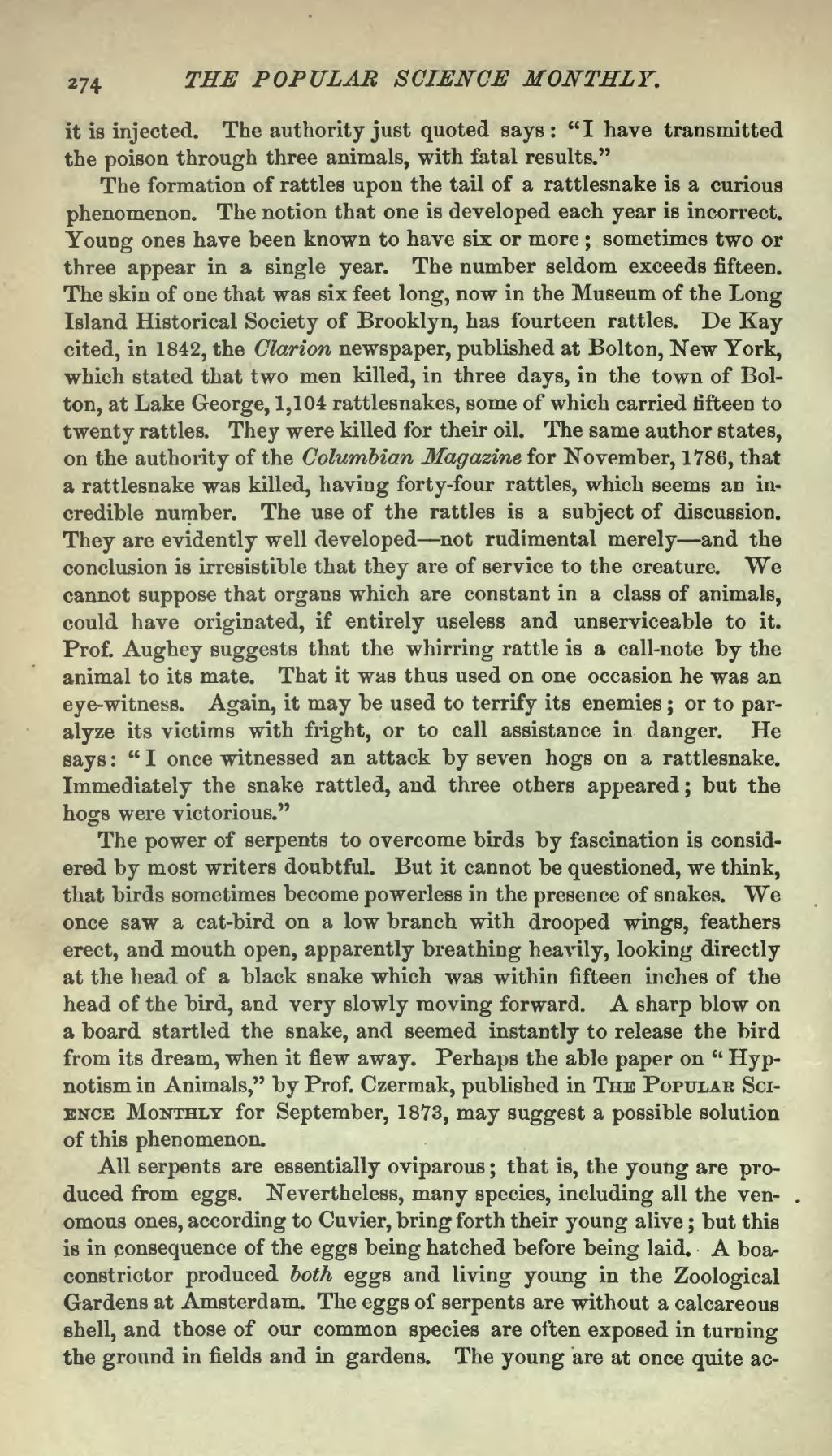it is injected. The authority just quoted says: "I have transmitted the poison through three animals, with fatal results."
The formation of rattles upon the tail of a rattlesnake is a curious phenomenon. The notion that one is developed each year is incorrect. Young ones have been known to have six or more; sometimes two or three appear in a single year. The number seldom exceeds fifteen. The skin of one that was six feet long, now in the Museum of the Long Island Historical Society of Brooklyn, has fourteen rattles. De Kay cited, in 1842, the Clarion newspaper, published at Bolton, New York, which stated that two men killed, in three days, in the town of Bolton, at Lake George, 1,104 rattlesnakes, some of which carried fifteen to twenty rattles. They were killed for their oil. The same author states, on the authority of the Columbian Magazine for November, 1786, that a rattlesnake was killed, having forty-four rattles, which seems an incredible number. The use of the rattles is a subject of discussion. They are evidently well developed—not rudimental merely—and the conclusion is irresistible that they are of service to the creature. We cannot suppose that organs which are constant in a class of animals, could have originated, if entirely useless and unserviceable to it. Prof. Aughey suggests that the whirring rattle is a call-note by the animal to its mate. That it was thus used on one occasion he was an eye-witness. Again, it may be used to terrify its enemies; or to paralyze its victims with fright, or to call assistance in danger. He says: "I once witnessed an attack by seven hogs on a rattlesnake. Immediately the snake rattled, and three others appeared; but the hoses were victorious."
The power of serpents to overcome birds by fascination is considered by most writers doubtful. But it cannot be questioned, we think, that birds sometimes become powerless in the presence of snakes. We once saw a cat-bird on a low branch with drooped wings, feathers erect, and mouth open, apparently breathing heavily, looking directly at the head of a black snake which was within fifteen inches of the head of the bird, and very slowly moving forward. A sharp blow on a board startled the snake, and seemed instantly to release the bird from its dream, when it flew away. Perhaps the able paper on "Hypnotism in Animals," by Prof. Czermak, published in The Popular Science Monthly for September, 1873, may suggest a possible solution of this phenomenon.
All serpents are essentially oviparous; that is, the young are produced from eggs. Nevertheless, many species, including all the venomous ones, according to Cuvier, bring forth their young alive; but this is in consequence of the eggs being hatched before being laid. A boa constrictor produced both eggs and living young in the Zoological Gardens at Amsterdam. The eggs of serpents are without a calcareous shell, and those of our common species are often exposed in turning the ground in fields and in gardens. The young are at once quite ac-
